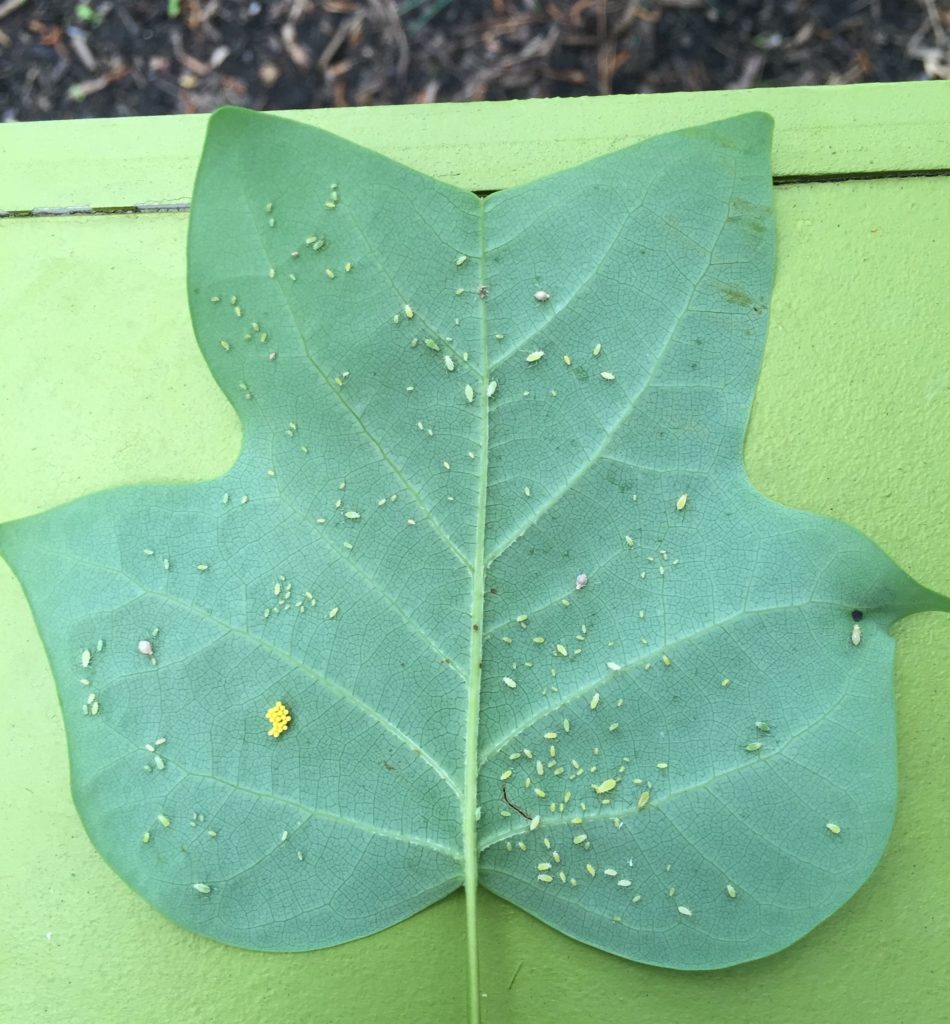Aphids and natural enemies on tulip poplar
go.ncsu.edu/readext?526561
en Español / em Português
El inglés es el idioma de control de esta página. En la medida en que haya algún conflicto entre la traducción al inglés y la traducción, el inglés prevalece.
Al hacer clic en el enlace de traducción se activa un servicio de traducción gratuito para convertir la página al español. Al igual que con cualquier traducción por Internet, la conversión no es sensible al contexto y puede que no traduzca el texto en su significado original. NC State Extension no garantiza la exactitud del texto traducido. Por favor, tenga en cuenta que algunas aplicaciones y/o servicios pueden no funcionar como se espera cuando se traducen.
Português
Inglês é o idioma de controle desta página. Na medida que haja algum conflito entre o texto original em Inglês e a tradução, o Inglês prevalece.
Ao clicar no link de tradução, um serviço gratuito de tradução será ativado para converter a página para o Português. Como em qualquer tradução pela internet, a conversão não é sensivel ao contexto e pode não ocorrer a tradução para o significado orginal. O serviço de Extensão da Carolina do Norte (NC State Extension) não garante a exatidão do texto traduzido. Por favor, observe que algumas funções ou serviços podem não funcionar como esperado após a tradução.
English
English is the controlling language of this page. To the extent there is any conflict between the English text and the translation, English controls.
Clicking on the translation link activates a free translation service to convert the page to Spanish. As with any Internet translation, the conversion is not context-sensitive and may not translate the text to its original meaning. NC State Extension does not guarantee the accuracy of the translated text. Please note that some applications and/or services may not function as expected when translated.
Collapse ▲This time of year tulip poplar leaves are covered in aphids. The great thing about tulip poplar aphids is that they attract a diverse array of predators and

Tulip poplar aphids, lady beetle eggs, and parasitoid mummies on a tulip poplar leaf. Photo: SD FRank
that can help control other pests. Therefore, after a few weeks of dowsing your sidewalk in honeydew the aphids almost disappear. Here is a tulip poplar leaf that foreshadows the aphids demise. It has lots of aphids but also lady beetle eggs and a parasitoid mummy. On the same tree I found syrphid fly larvae, green lacewing larvae and eggs, and other predators. Thus, I don’t feel any management is usually necessary for these aphids. They support many natural enemies which often have a hard time living in urban landscapes.


